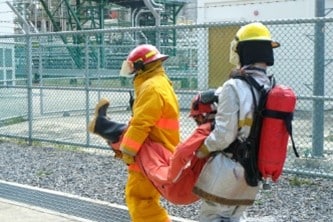In the EMS world, there is increased importance placed on the need for proper documentation. For anyone paying attention for the past several years, many EMS experts have been calling for providers to be more detailed in documenting patient encounters.
 As an EMS CQI company, Girard & Associates has always placed a great deal of emphasis on thorough, complete, and accurate run reports. Providers, on the other hand, often feel they are being overly scrutinized by CQI in their report writing. Not an easy mine field to navigate for CQI officers.
As an EMS CQI company, Girard & Associates has always placed a great deal of emphasis on thorough, complete, and accurate run reports. Providers, on the other hand, often feel they are being overly scrutinized by CQI in their report writing. Not an easy mine field to navigate for CQI officers.
As an EMS CQI company, Girard & Associates has always placed a great deal of emphasis on thorough, complete, and accurate run reports. Providers, on the other hand, often feel they are being overly scrutinized by CQI in their report writing. Not an easy mine field to navigate for CQI officers.
How much detail is too much? The reality is that any health care practitioner today feels overburdened with paperwork requirements. Thorough documentation is unavoidable in today’s environment. Just look to the EMS news to see current legal cases where field providers are being held to account on what they wrote in the run report versus what the patient, bystanders, receiving facilities, ring doorbell cameras or other first responders body cameras say happened. One recent legal case even shows the paramedic on the witness stand being accused of lying under oath based on testimony versus run report documentation.
Which brings us to the documentation of how patients are moved. Field providers often give an eye roll or even an outright groan when asked to document how they move their patients. But in recent years, documenting how a patient was moved has gotten more scrutiny due to complaints from patients or bystanders. When a patient complains that their medical condition was worsened due to how they were moved, but there is no documentation of method of movement in the run report, problems can arise.

EMS medical directors have been getting on board in recent years on this issue. One EMS medical director witnessed a patient transfer from the EMS providers stretcher to the hospital stretcher where the patient was allowed to slide themselves over and almost fell to the ground when the two stretchers parted.
The field providers, seeing what was happening quickly pushed the stretchers together but caused the patient to get pinched between the two stretchers causing hip pain in addition to her other complaints. Severe injury was avoided, but the patient sustained a minor injury in the mishap.
In another case, field providers allowed a patient with a hip injury to stand and pivot to the stretcher and in the process the patient leaned on their leg causing a “pop” in the injured hip causing increased pain. The patient believed her “minor” hip problem got significantly worse after she was allowed to move in this fashion.
Many medical directors are asking field providers to be more specific in how patients are being moved. Did they lift the patient and if so, how? A 2-person lift under the arms and knees, a 4-person lift, stand and pivot, stand and walk 5 steps with providers on either side of the patient holding the patient’s arms, stand and walk down several stairs, and if so, how many and under what safety precautions? How you got the patient onto the stairchair or stretcher has become an essential element to include in a well written run report.

It is no longer sufficient to document patient moved, “to stair chair, to stretcher, to ambulance” as many providers routinely do. More detail in documenting how the patient was moved can go a long way in defending a provider’s method of moving the patient, when a complaint arises. It is much wiser to get into the habit of documenting this critical detail now before problems occur.
For more information on this topic listen to The G&A Way Podcast Season 2 Episode 3 – Moving Your Patient Safely: Why We Need to Document the Details of How We Move Our Patients.
You can also get more on information on EMS CQI articles and resources at www.girardassoc.com or email paul.girard@girardassoc.com.
For more on our EMS CQI clinic topics series check out our other articles.



